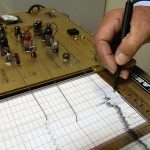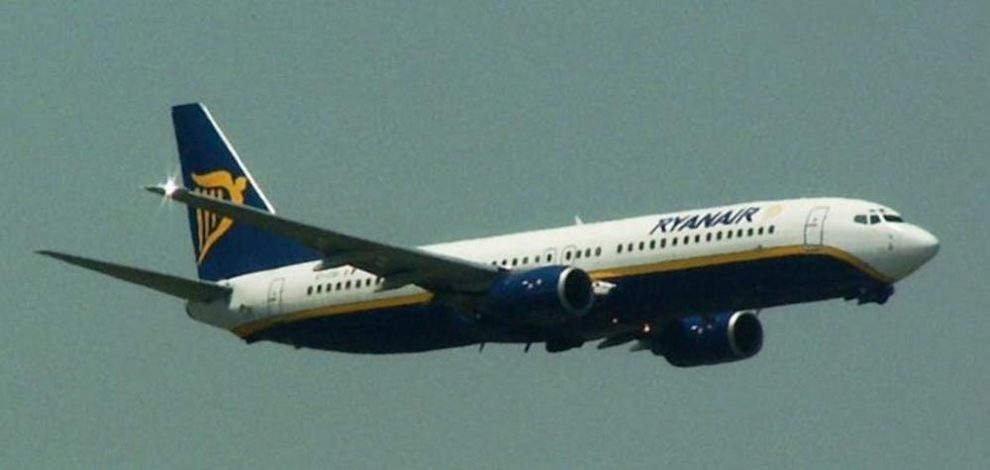The catastrophic crashes of two Boeing 737 Max 8 planes in less than five months have focused attention on what information the company shared with pilots and how much training they received on the new aircraft.
Aviation experts also now question whether pilots for some foreign airlines are prepared to handle emergency situations.
The accidents involving Lion Air Flight 610 off the coast of Indonesia on Oct. 29 and Ethiopian Airlines Flight 302 on March 10 just outside the capital city of Addis Ababa killed all aboard, a total of 346 passengers and crew.
The crashes are still under investigation, but the Ethiopian transport minister said there are “clear similarities’’ in the doomed planes’ movements, with erratic changes in speed and altitude. In both cases the pilots unsuccessfully attempted to return to the airport a few minutes after takeoff before the aircraft nosedived.
While signs point to a faulty sensor linked to a new feature of the jet’s flight-control system as the likely source of the problem, some industry observers have also noted pilots in many other countries don’t undertake nearly as extensive a training regimen as their American peers.
To fly for one of the scheduled U.S. airlines or their regional carriers, the Federal Aviation Administration requires an Airline Transport Pilot certificate, which calls for at least 1,000-1,500 flight hours, depending on how the training was done. And pilots hired by the major airlines typically have much more experience than that.
By comparison, the roughly equivalent Multi-crew Pilot License issued by the International Civil Aviation Organization (ICAO), which takes a different approach to training, can be earned with as little as 200 flight hours.
Brent Bowen, professor of aeronautical science at Embry-Riddle Aeronautical University and former dean of its College of Aviation, said most U.S. pilots come from military or college-based programs and have four-year degrees. That’s often not the case elsewhere, he said, especially in developing countries.
“Some nations hire pilots basically off the street without a degree and send them to 18 months of training, then put them in the co-pilot seat of a 737,’’ Bowen said. “You can pretty much say the co-pilots at our major airlines in the U.S. have probably 10 times the amount of experience that some countries’ co-pilots have.’’
US Catholic bishops president says deportations instilling ‘fear’ in ‘widespread manner’: ‘Concerns us all’
DHS responds after reports CISA chief allegedly failed polygraph for classified intel access
Former classmate says suspect in Brown, MIT killings was ‘socially awkward’ and ‘angry’ during college years
DOJ restores Trump photo to Epstein files after determining no victims depicted
Man rushed to hospital in apparent self-inflicted shooting at Atlanta airport
Trump’s team reports concrete progress in Ukraine peace negotiations with European partners
Byron Donalds urges conservatives to ‘focus on the mission’ at AmericaFest after 2025 setbacks
Brown Recluse Spider Bite Leaves Woman Virtually Paralyzed: ‘I Couldn’t Feed Myself’
Vance says ‘America First’ movement rejects ‘purity tests,’ welcomes critical thinkers
Fetterman Rips Into Fellow Democrats After Anti-Semitic Australia Shooting: ‘A Rot Within the American Left’
Illegal Sentenced to 20 Years in Prison for Strangling ICE Agent
US Coast Guard pursues third ‘dark fleet’ oil tanker as Trump targets Venezuelan sanctions evasion network
42 Years Later, DNA Evidence Solves Case of 5 Texans Kidnapped from a KFC Restaurant and Executed After Robbery
White House teases major housing affordability plan as prices squeeze Americans
Fisherman survives near-fatal shark attack with own lifesaving care, instincts that kept him alive
Ethiopian Airlines, which before this accident had a stellar safety record, said the captain of Flight 302, Yared Getachew, was an experienced pilot with more than 8,000 flight hours. However, co-pilot Ahmed Nur Mohammed had only 200 hours of flight time, according to the company. Both trained at the airline’s academy.
In addition, the New York Times reported Thursday that Getachew did not receive simulator training for the Max plane, even though Ethiopian Airlines was among the first carriers to acquire that teaching device, and it was operational by January. It wasn’t clear whether Nur trained on a Max simulator.
The airline challenged the report’s accuracy and said in a statement both pilots completed the “differences training’’ recommended by Boeing before upgrading from the old 737 to the Max model, adding that the pilots were also briefed on the FAA directive following the Lion Air crash.
Ethiopian did not address whether Getachew and Nur trained on a Max simulator, but noted that the machine does not replicate the problems apparently created by the new software in the Max flight-control system, known as MCAS.
What happens if?
The time spent training on simulators is particularly critical to developing the ability to respond to emergencies, said Robert Ditchey, a former Navy pilot and co-founder of America West Airlines who used to hire and train pilots.
“The only way you get that kind of training – what happens if your engine quits; what happens if this fails or that fails – is in the simulator,’’ Ditchey said, pointing out U.S. airlines have more and higher-quality simulators than their foreign counterparts.
“If they don’t have simulators, they can’t do it. So if you’re Kazakhstan and you don’t have your own simulator, you can’t teach that kind of stuff. The only training you can give your pilots is normal stuff. You don’t teach them engine outage, you don’t teach them emergency, you don’t teach them if the airplane’s on fire. So foreign airlines are limited by a number of factors, one of the major factors being what’s available to them.’’
Though Ditchey lauded Ethiopian, which does have a Max simulator, he also said most developing countries lack the kind of aviation infrastructure found in the U.S., where there are plenty of flight schools and all five of the armed service branches train pilots.
Story cited here.
























